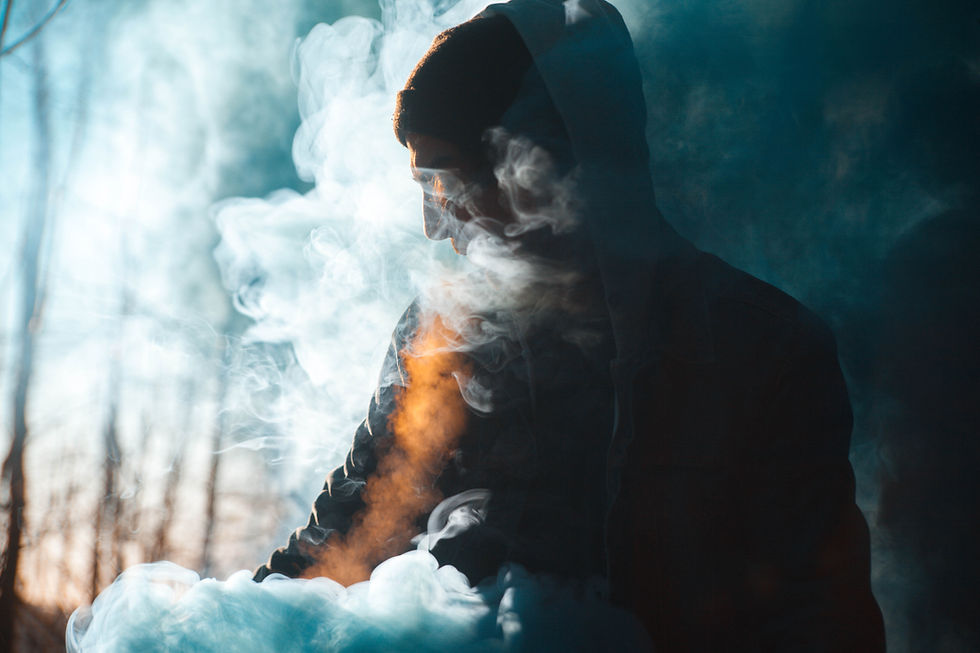Shurpu: Ancient Rite of Curse Removal
- Sylvia Rose

- Jan 21, 2024
- 3 min read
Shurpu (Šurpu) is a ritual or group of rituals to counter a curse of unknown origin. First practiced by priests and doctors in ancient Mesopotamia, the Shurpu writings cover nine clay tablets.
Read: Cult of the Fire God - Bronze Age Quest Adventure
See also:
Written in Akkadian, the official language of trade and commerce, Šurpu is a collection of nine clay tablets. They're inscribed with recipes, rituals, instructions, spells, incantations and hymns, and names of entities.
Read: Cult of the Fire God - Bronze Age Quest Adventure
Healers use the Shurpu texts when a sufferer is affected by evil activity and doesn't know the source. Bad luck and illness can be caused by demons; or, Gods who enlist demons to carry out vengeance.
See also:
Sins may include ritual offences, unintentional breaking of taboos, disrespect and possible offences against the moral or social order. Deities and a few demons appear in the Shurpu tablets.
Kulullu the Fish Man is one of the demons named in tablet VIII. He also appears in a hymn to Marduk and the gods of the Esagila, the great temple complex in Babylon where the statue of Marduk is kept.
See also:
Kulullu is one of the monsters created by Tiamat to battle her traitorous offspring. He and other of Tiamat's creatures are defeated by Marduk. They then become "good" demons and use their powers in protective capacities.
Read: Cult of the Fire God - Bronze Age Quest Adventure
Tablets III and IV are addressed to the patron deity of magic, the hero god Marduk. The others contain lists of Gods to be invoked or praised, as well as spells or incantations to repel evil magic.
See also:
The Shurpu collection refers to treatment for a māmītu, or a curse, compared to the Maqlû incantation series used against kišpū, black magic. Along with the lists of divinities invoked, the ritual includes the burning of dough.
The rites are compiled from older individual incantations, collected and inscribed during the middle Babylonian period, c. 1350 - 1050 BCE. Šurpu begins with an incantation: "enūma nēpešē ša šur-pu t[epp]ušu (when you perform the rituals for ‘Burning’ )".
See also:
The dough is wiped (kuppuru) over the supplicant. This transfers the person's sins to the object. Burning of the dough ritually cleanses a person of sins or consequences of sins.
Specific sins might include adultery, murder, theft, perjury, witchcraft, arrogance against the gods or humans. One can also become contaminated by accursed people or objects they infect.
See also:
The patient throws items such as onion or garlic peel, or red wool, symbolically representing transgressions, into the fire. At the same time the person recites an incantation:
My illness, my weariness, my guilt, my crime, my sin, my transgression,
The illness present in my body, my flesh (and) my veins,
Be peeled off like this garlic
So the fire-god, the burner, consumes (it) today!
May the curse leave so I may see the light!
from Šurpu V–VI
See also:
In ancient Mesopotamia and region, illness or afflictions are caused by a demon or demonic worm (tooth worm, eye worm). The malevolent being may or may not be acting under the instructions of a more powerful entity such as a God/dess.
For example when the demon Shulpae inflicts bennu, or epilepsy, he's said to act under instructions of Moon God Sin. Shulpae is also an important pastoral God of flocks and fields. He called "beloved spouse" by the Great Mountain Goddess Ninhursag.
See also:
In another story Enlil, Father of the Gods, tells disease demon Namtar to inflict a plague upon the human race. The humans are making too much and Enlil can't sleep. It's part of the larger flood story.
See also:










